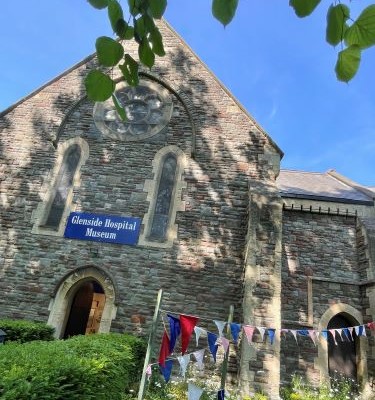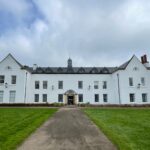
Hanham Hall, Leigh Court & Anchor Lodge

Submission date extension 29th Sept for open exhibition: What brings me joy
Exploring Stoke Park
In 2025 Glenside Hospital Museum received funding from the National Lottery Heritage Fund in support of the Protect our Wellbeing (PoW!) project.
This has given us a precious opportunity to explore and preserve the history of Stoke Park Hospital (1909-2000) which was a large institutional facility for people with learning disabilities, located in Bristol, England.
The hospital primarily accommodated long-term residents, including both adults and children. In its early days it was self-sufficient, with facilities such as a school, farm and workshops.
Read on for some fascinating facts about the hospital including its buildings, wards and grounds.
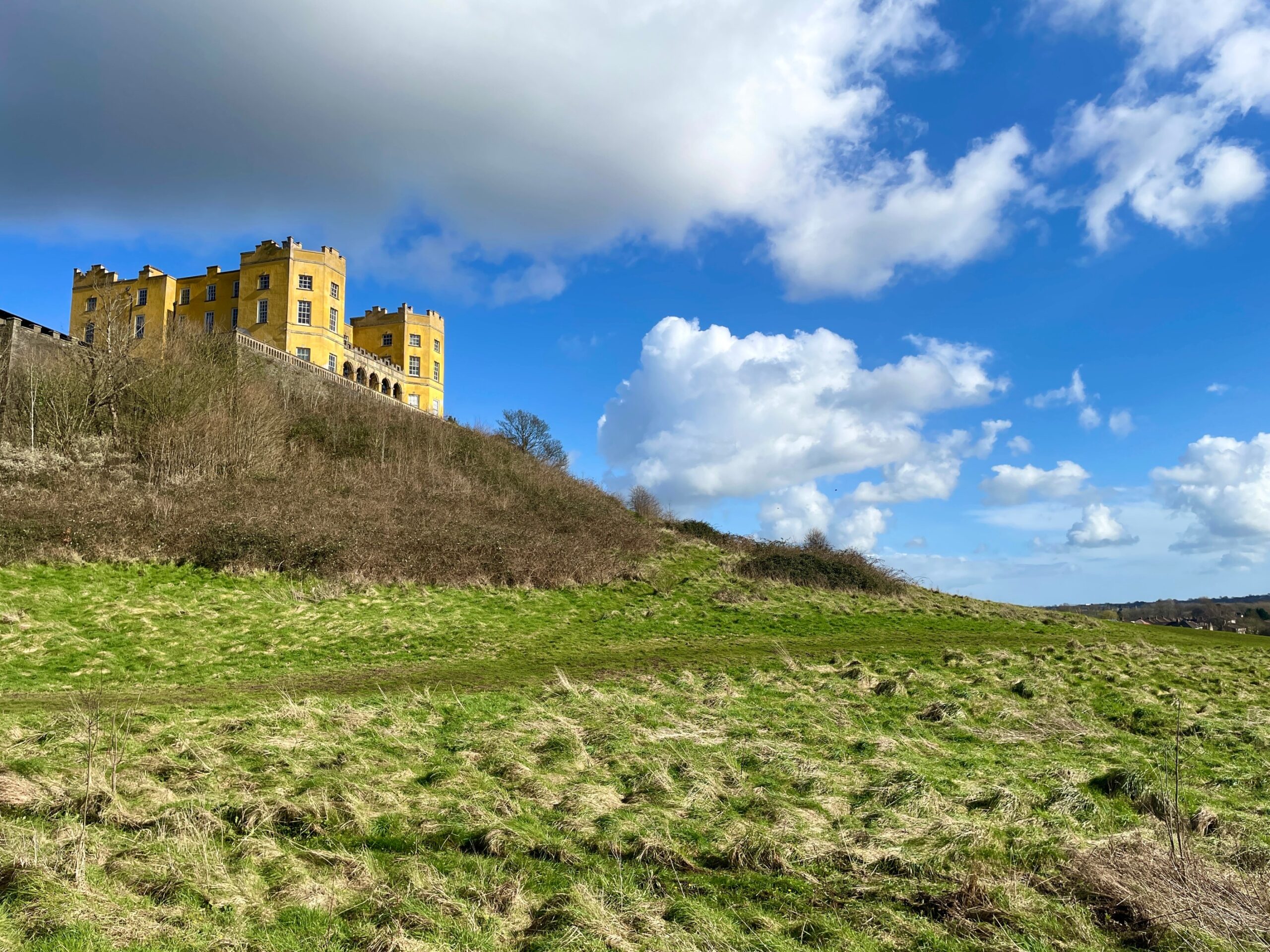
Dower House, 2024
Purdown Hospital
A walk through the Purdown wards at Stoke Park Colony
A recognisable landmark standing prominently on the side of the M32 motorway, Stoke Park’s distinctive bright yellow Dower House is arguably one of the most iconic buildings in Bristol.
While now it is private accommodation, it was once one of the wards at Stoke Park Colony.
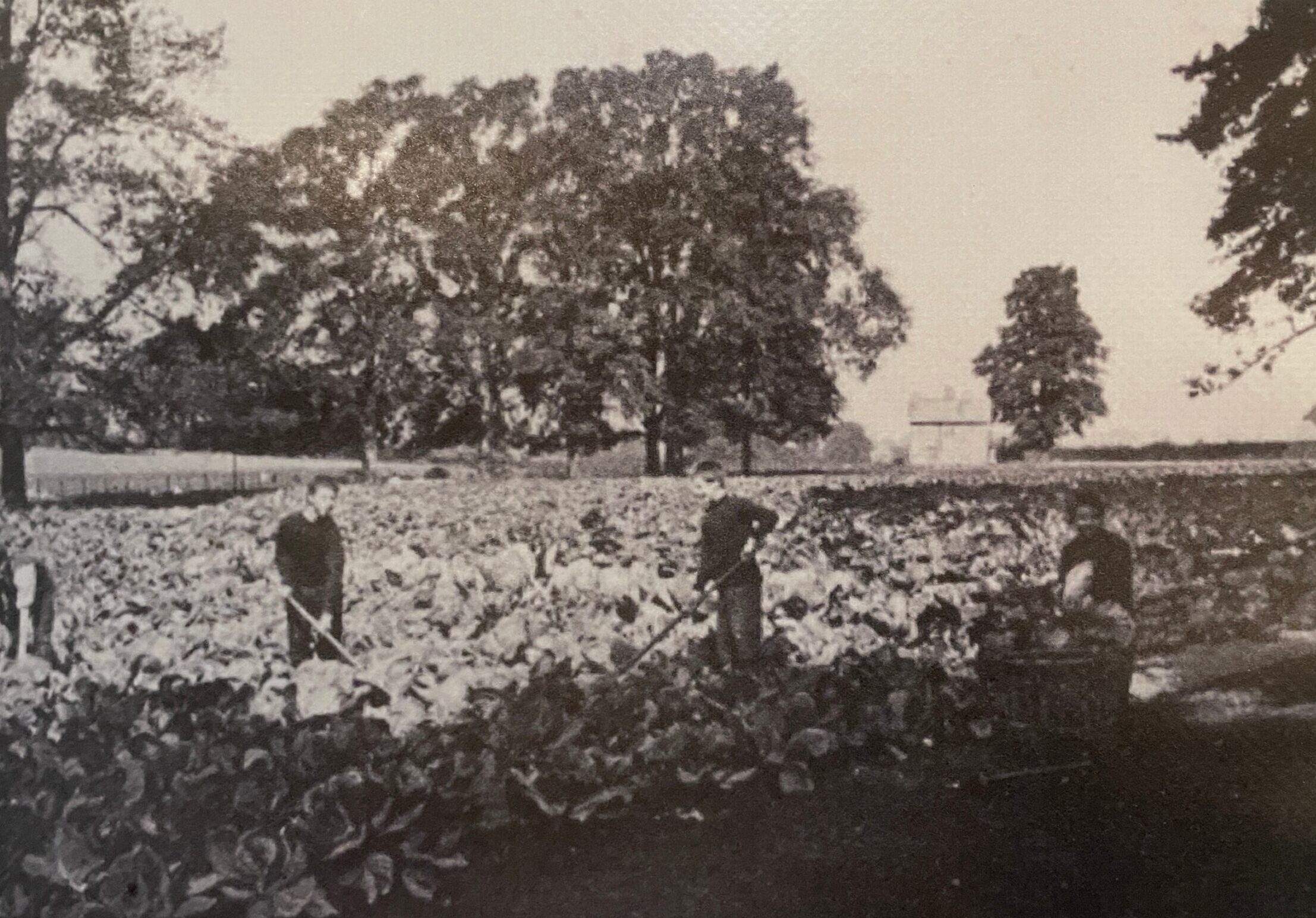
In the vegetable gardens
Dower House
Learning disability care
The hospital was self-supporting. As well as the residential buildings it had stables, a school and farm to provide the necessary resources for the entire colony and provide, for those who were able, work on the site.
Stoke Park Colony was founded by the Burdens. This group of care institutions for learning disabilities started with Dower House, which was used predominantly for adult female patients with learning disabilities, from 1909-1986.
The ground floor rooms were day rooms and meeting rooms for the staff, the matron and the committee. The bathrooms, kitchen and cloakrooms were also located on this floor.
The first floor was used as sleeping apartments for patients and the matron. The second floor provided sleeping accommodation for staff.
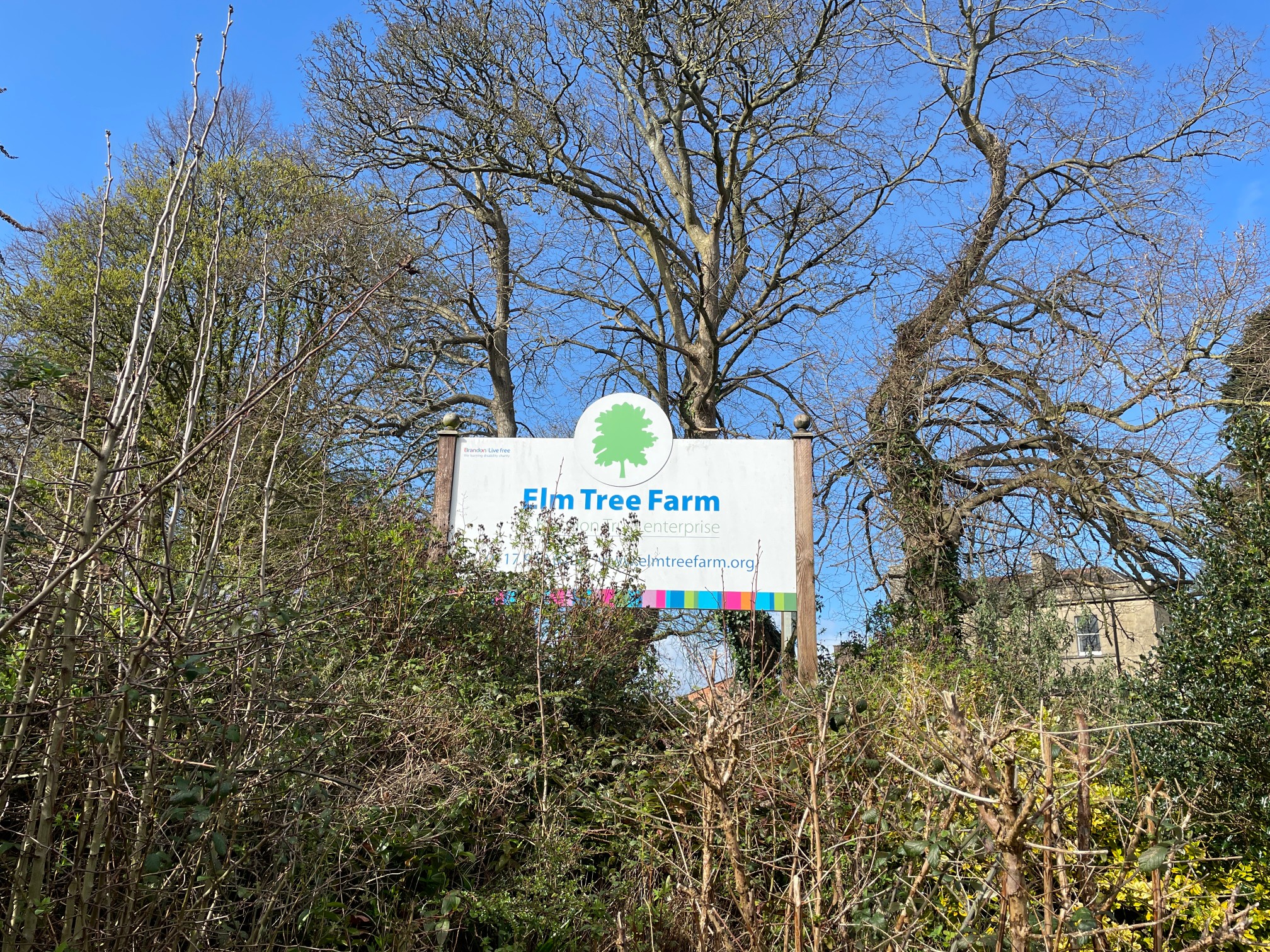
Elm Tree Farm, 2025
Elm Tree Farm
A farming environment rooted in care
Elm Tree Farm (originally known as Elm Farm) was part of Stoke Park Hospital until the 1980s. It is accessed via Stapleton Village.
In 1982, 6 individuals started a vegetable garden on the farm as part of their occupational therapy, which slowly evolved to the care farm as it is today.
Although no longer part of the hospital estate, Elm Tree Farm’s therapeutic ethos as a care farm remains. Brandon Trust have run the farm since 2000, expanding to include a farm shop in recent years. The programme provides a supervised, structured environment incorporating farming-related activities for around 80 adults with learning disabilities and autism.
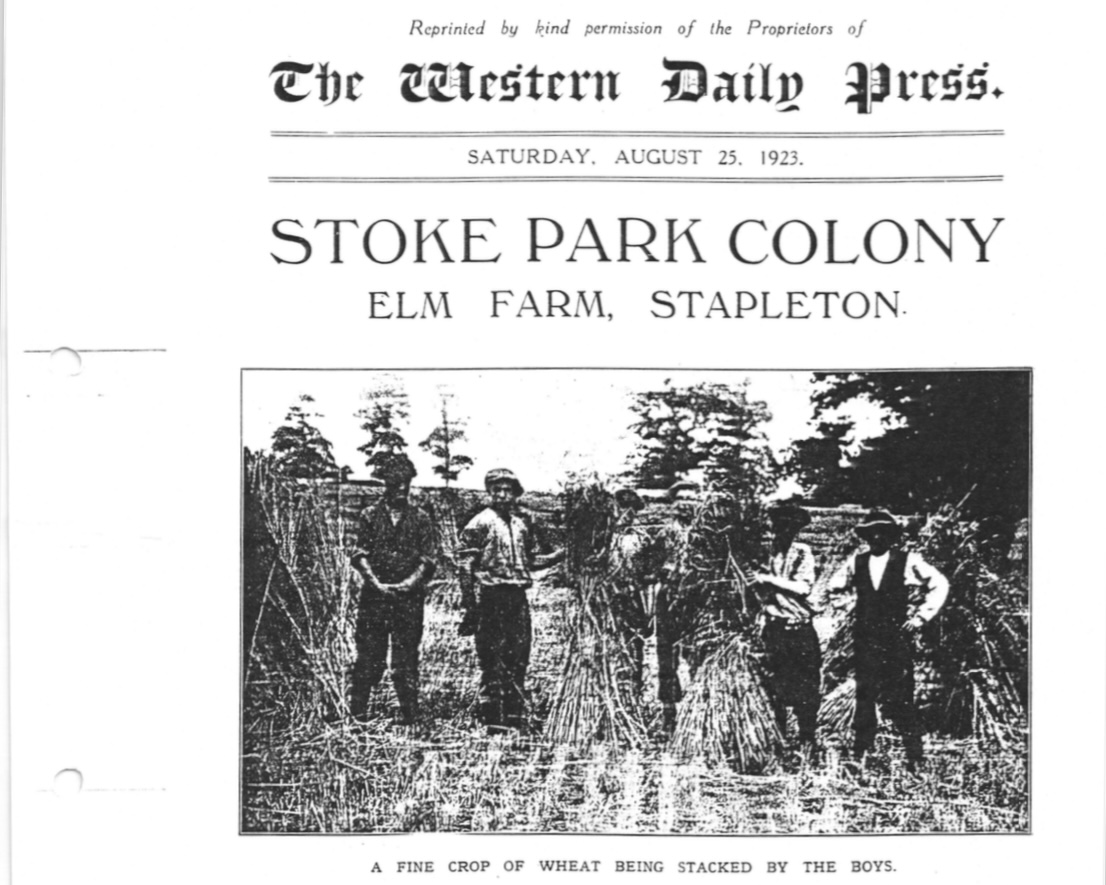
Elm Farm newspaper article, 1923
An historic article
Farming activities documented through time
This newspaper article from Western Daily Press in 1923 details the hospital's farming activities for the young boys with learning disabilities living at Purdown Hospital.
"As I had a look at that well tended herd of cows I could not but think, and think deeply, how much better it was to utilise this labour to produce food for maintenance than to see it cast aside and to degenerate until it became a social danger. And yet how few Bristolians, and still fewer of our countrymen, know of this Colony farming so many acres right in their midst".
Eldred G. F. Walker, North Somerset reporter
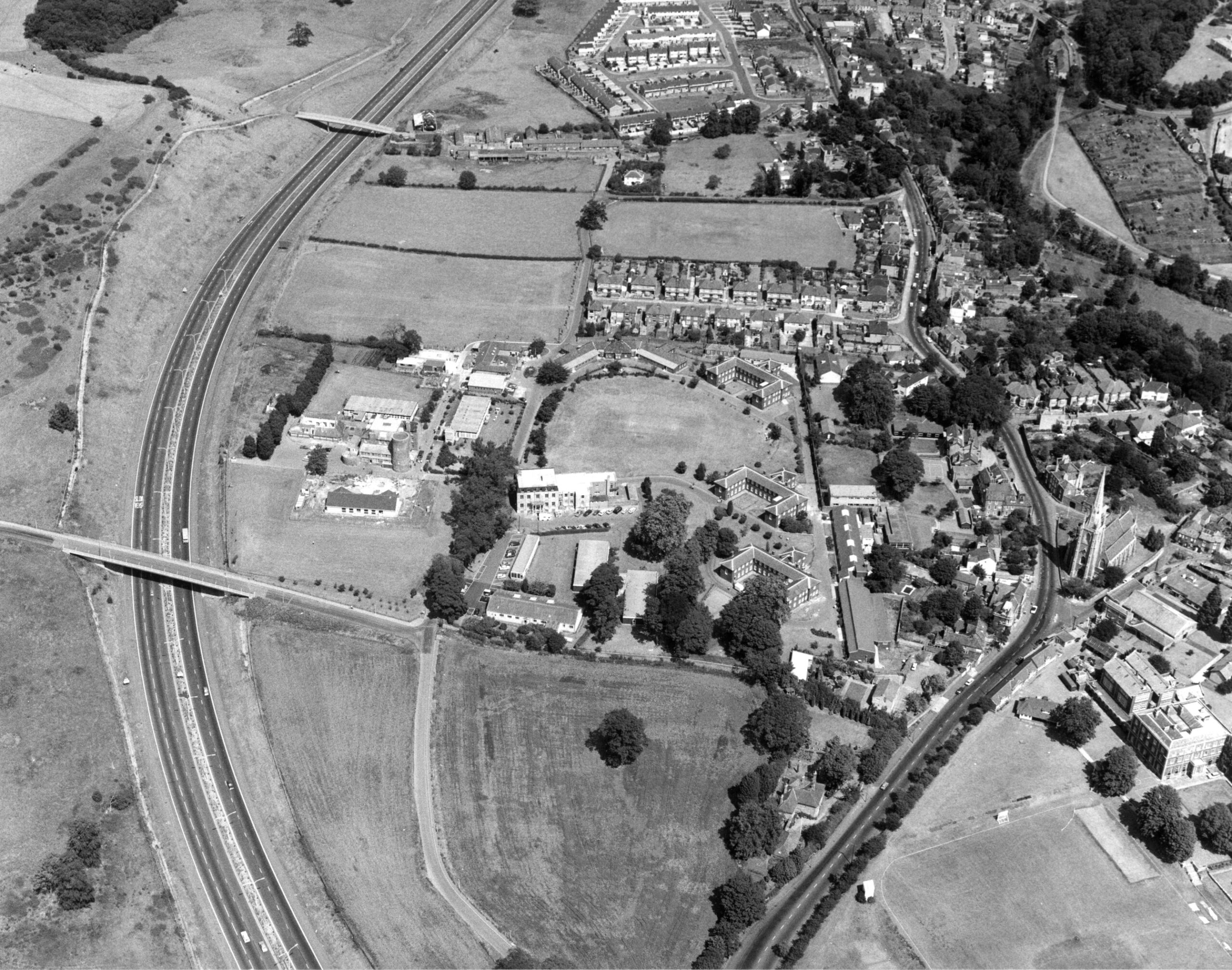
A 1976 aerial photo of West Side (now Stapleton Village)
West Side at Purdown
Now part of Stapleton Village
Acquired by the Burdens in 1914, these buildings were known as West Side from 1931 until the late 1950s.
West Side comprised a number of buildings in close proximity and included the following houses/wards: Heath House, Beech House, Oak, Cherry, Cedar, Elms and Towers.
Most can be seen here in the center of this aerial photo (from 1976). Elms is slightly up to the right and Heath House is out of sight across the motorway bridge in the foreground.
All of these wards were originally for men, with the exception of Elms, which was first licensed to care for blind women.
By 1924, 340 people lived in the houses/wards, in the end there were 651 beds.
In 1948, the hospital complex was taken over by the brand new National Health Service (NHS).
In 1949 it was officially renamed Stapleton Park Colony but soon after was simply referred to as Purdown.
In 1982, Purdown Hospital was taken over by Frenchay Health Authority.
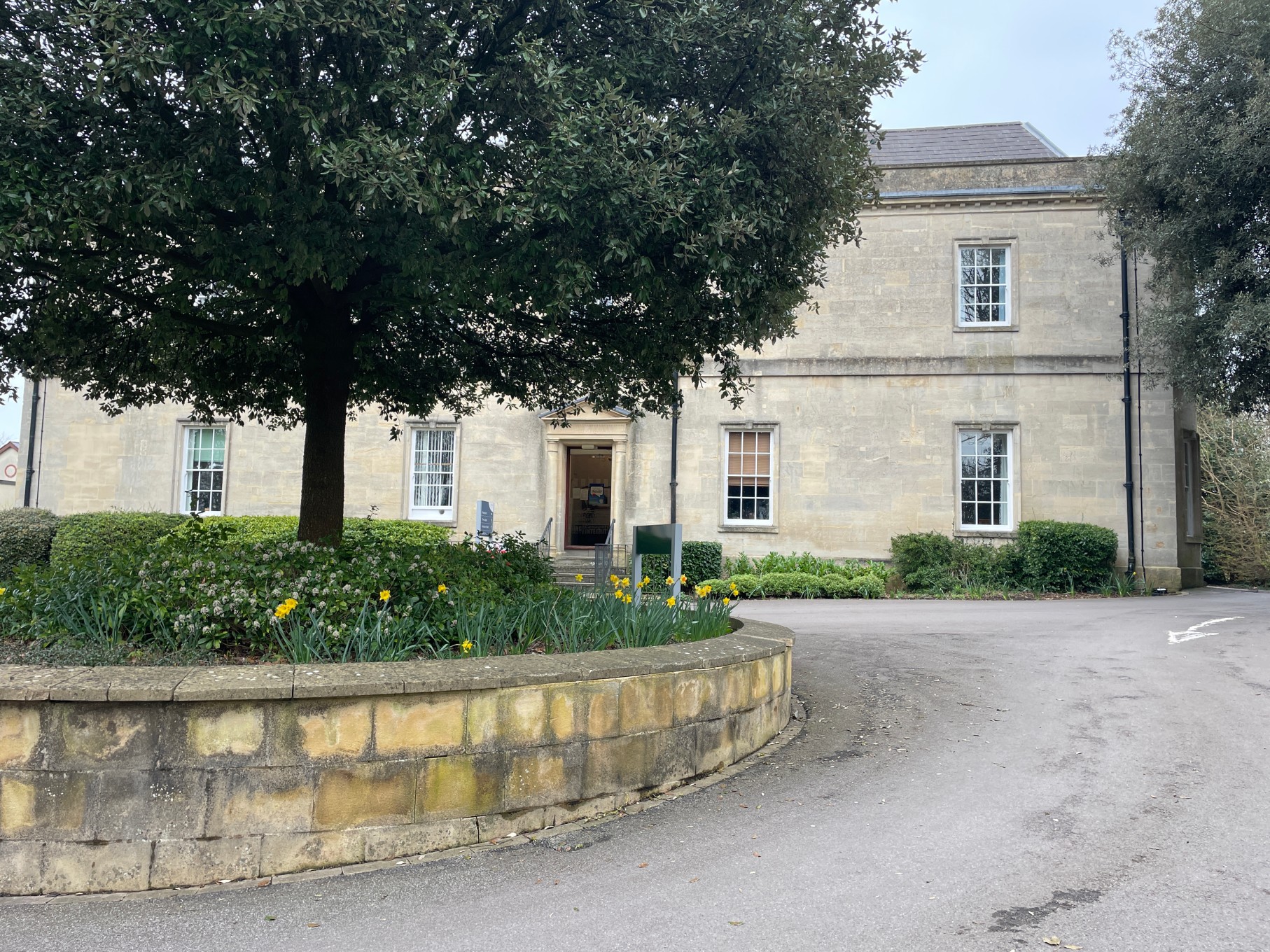
Heath House, 2024
Heath House
A historic house with links to Ashton Court
Hidden down a winding side road in Stapleton Village, Heath House originally used to care for men with “High grade mental deficiency”. These were men living with learning disabilities but who were physically able, trained to undertake work in the farm & workshops.
Heath House has history dating back to at least 1425 when it was owned by a religious order. Sold at dissolution, and bought by the Walter family in 1612, it was then passed by marriage to the Whitchurch’s in 1736, and then to the Smyth family (of Ashton Court) in 1767.
Eventually it passed through to Captain Charles W Cotterell-Domer in 1901. Reverend Harold Burden took it on in 1914 to incorporate into Stoke Park Colony. In its later years it became a children’s ward, and closed in 1985. In 1991, in a semi-derelict state, it was purchased by Priory Hospitals Group for use as a private psychiatric centre.
Did you know?
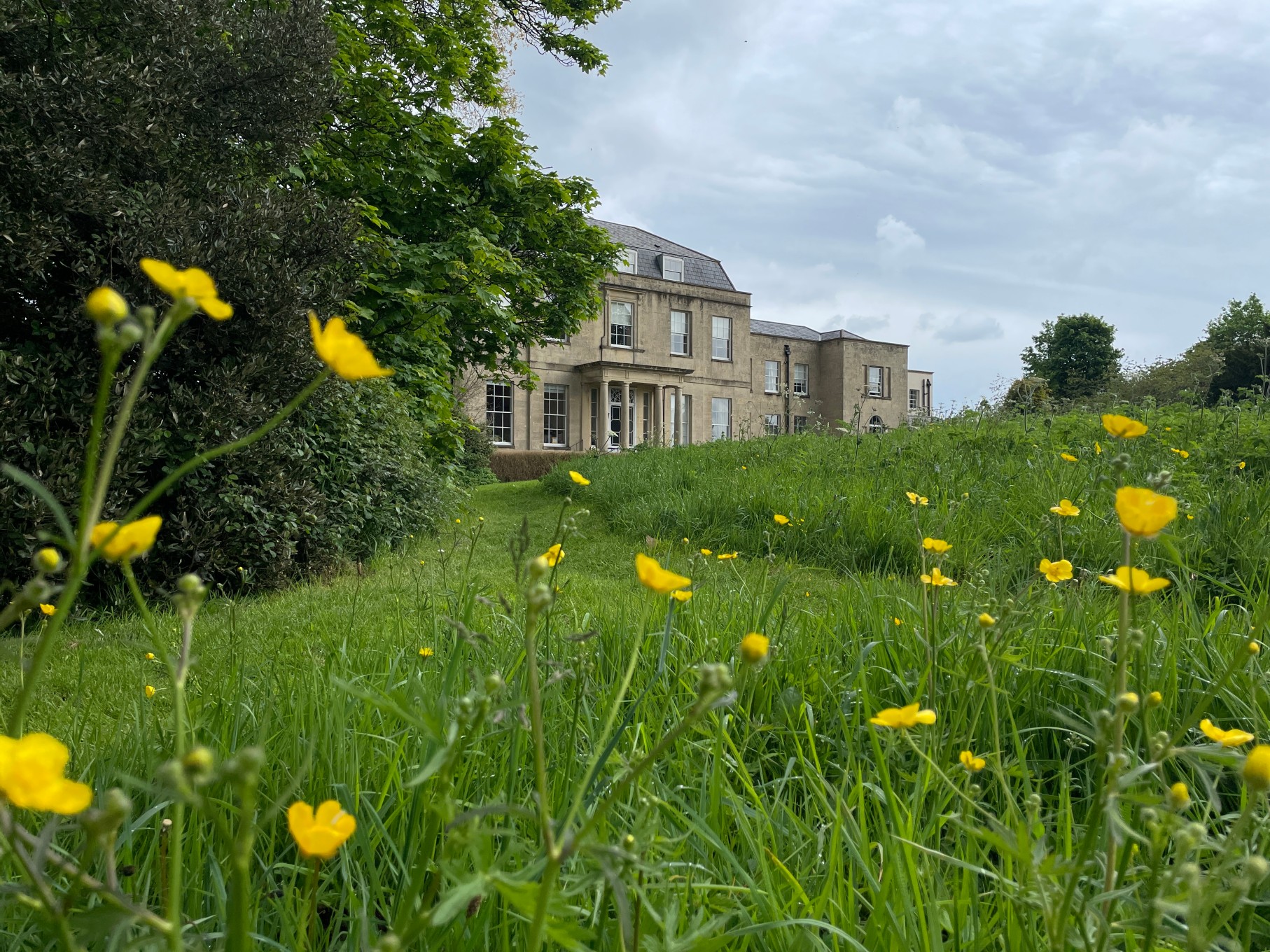
Beech House, 2024
Beech House
A house with a hidden history
The Burdens bought Beech House in September 1914 and incorporated it into Stoke Park Colony, as part of the West Side complex.
Various different conversions and outbuildings were created in the vicinity of Beech House to maximise the use of the land for accommodation, workshops and amenities.
Eventually there was an Occupational Therapy department, a barber shop, central kitchen, staff restaurant, laundry, chapel, admin office and even a clothing store!
In 1984 New Friends Hall was built in order to replace the original Friends Hall, which had served as a social club for staff and patients.
Beech House closed in August 1990.
If you're hunting for that hidden history, it happened before the house had any association with Stoke Park Hospital. Dig deeper in our detailed post about Raja Ram Mohan Roy.
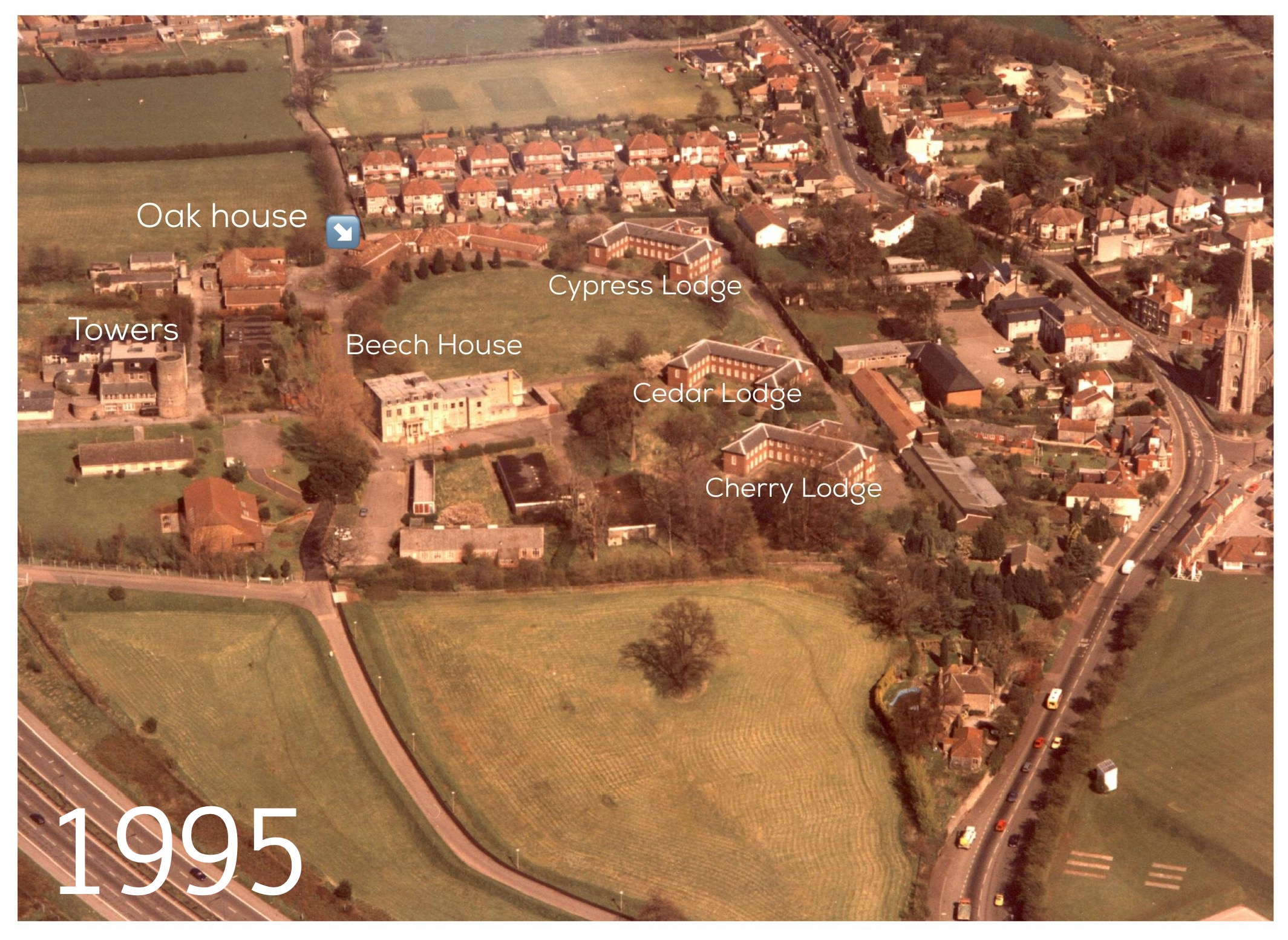
Aerial view of West Side, Stapleton village in 1995
Oak House + the lodges
Continued development at West Side
Oak House opened in 1930/31 and originally housed blind boys. Its capacity was for just 40. In 1938 it was converted and adapted to be used as a hospital, to allow any individual who became unwell in any of the Purdown learning disability wards to be medically cared for.
In 1934 there were 3 new blocks introduced to West Side/Purdown: Cherry Lodge, Cypress Lodge and Cedar Lodge, which you can easily see here from their distinctive C shape.
These buildings would have been served by many of the same staff and amenities as neighbouring Beech House.
These buildings were demolished to make way for private housing. The area was known by the developer as Glendale Grange until incorporated into the rest of Stapleton Village on completion in 1999.
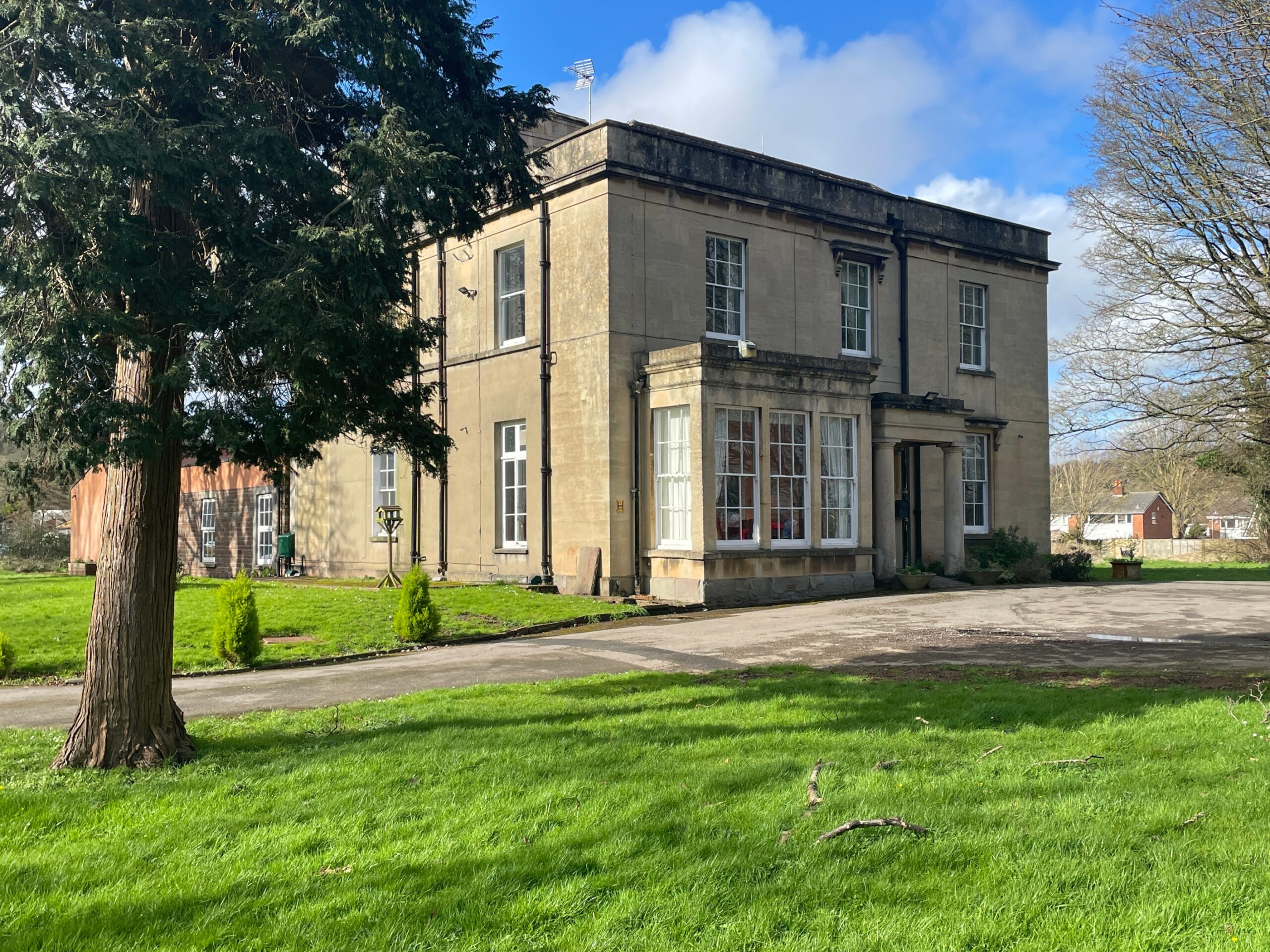
Elms Care Home for the elderly, 2024
Elms ward
An historic mansion in Stapleton Village
This Georgian mansion backs on to Elm Tree Farm. Pete Hayes was Charge Nurse on Elms for 5 years, from 1990 and remembers:
“Elms Ward was always known as a ‘Working Boys’ ward i.e. it was for the more able patients who went to work, either in the hospital with the porters, in the kitchens, laundry or Elm Tree Farm and some worked at Colston School and Rolls Royce/British Aerospace.
Purdown was always a male hospital while Stoke Park was mainly female, though when I was the Charge Nurse on Elms Ward it eventually was home to some more able females (6 I think) along with about 24 men!
The ward had a bar and a snooker room with a full sized Snooker Table. Some of the male residents had bicycles and two had mopeds.
While on Elms Ward we worked closely with the work places where the patients lived and also with Elm Tree Farm.”
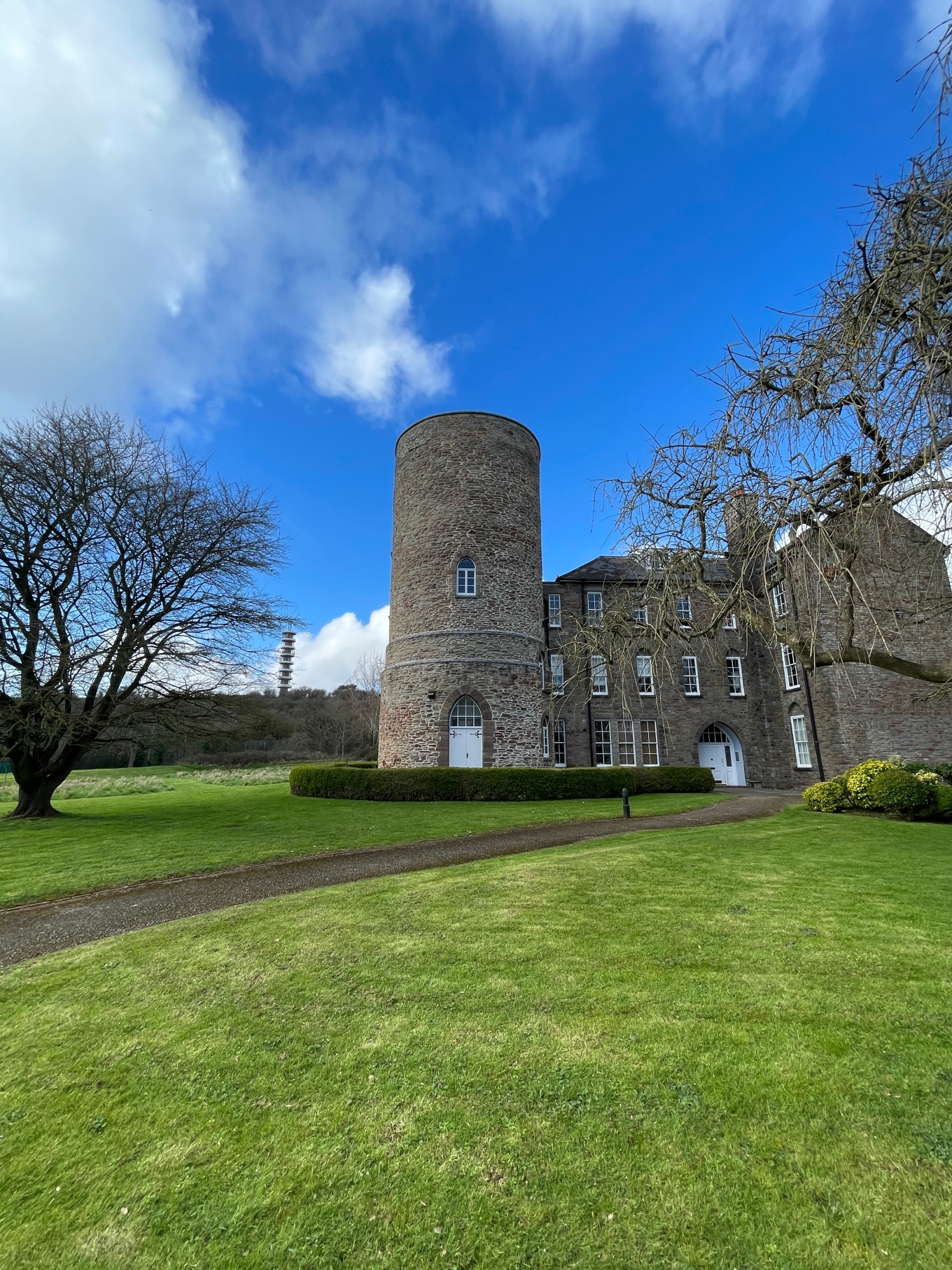
Linden House, 2024
Towers ward
Originally a folly built by Thomas Wright
Adjacent to Beech House, this ancient tower was originally a folly built by Thomas Wright as part of his garden developments in 1740-70. It is notable for the useful part it played in the Bristol Riots in the days of the Corn Law troubles.
When bought by the Burdens, only the tower part of the structure existed. The block was added on to convert it into functioning accommodation, including workshops.
The boys living here ranged from age 12-18 and within classification of learning disabilities at the time were noted as “high grade”. Many were capable of living independently, and could undertake garden and workshop work while living here. For example, some cleaned at Colstons Boys School (now known as Collegiate) and others worked on farms or in the hospital laundry service.
For some the work provided independence; others felt exhausted and exploited by it.
The 1920s-30s at Towers Ward were in many ways comparable with prison life. It was overcrowded and understaffed at its best, and reputed to be hostile and abusive at its worst.
In those days there were frequent escape attempts from Towers Ward. If caught by staff or police, the punishment was harsh.
The treatment of residents underwent a massive transformation due to the devoted service of staff and by the 1970s was almost unrecognisable. Towers was renamed Linden, and is now private housing named Linden House.
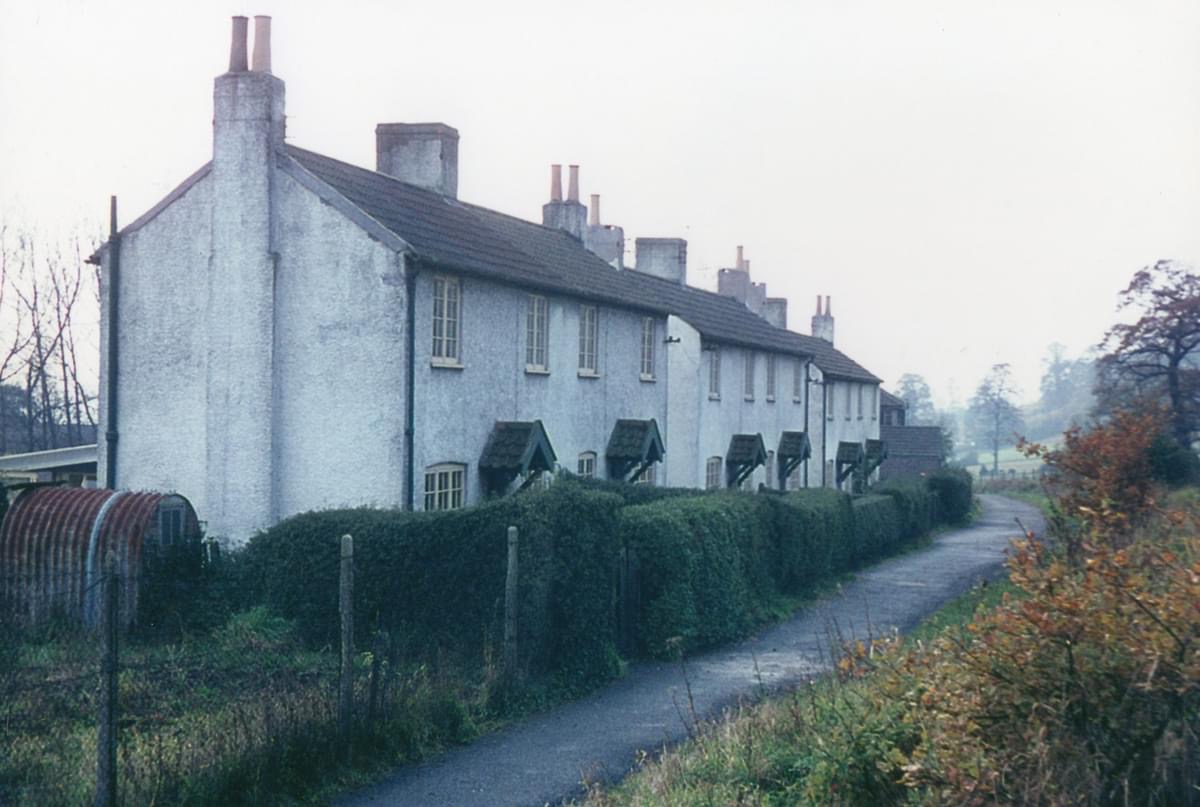
Westside Cottages c.1950s
Westside Cottages
Farm workers' cottages
In the 1930s new roads were being created in the Stapleton area, including a road to link Purdown with Stoke Park.
Westside Cottages and Purdown House only had a short life. Constructed in the late 1930s, they were demolished in the mid 1960s to make way for the construction of the M32 motorway, then known as the Bristol Parkway / Hambrook Spur.
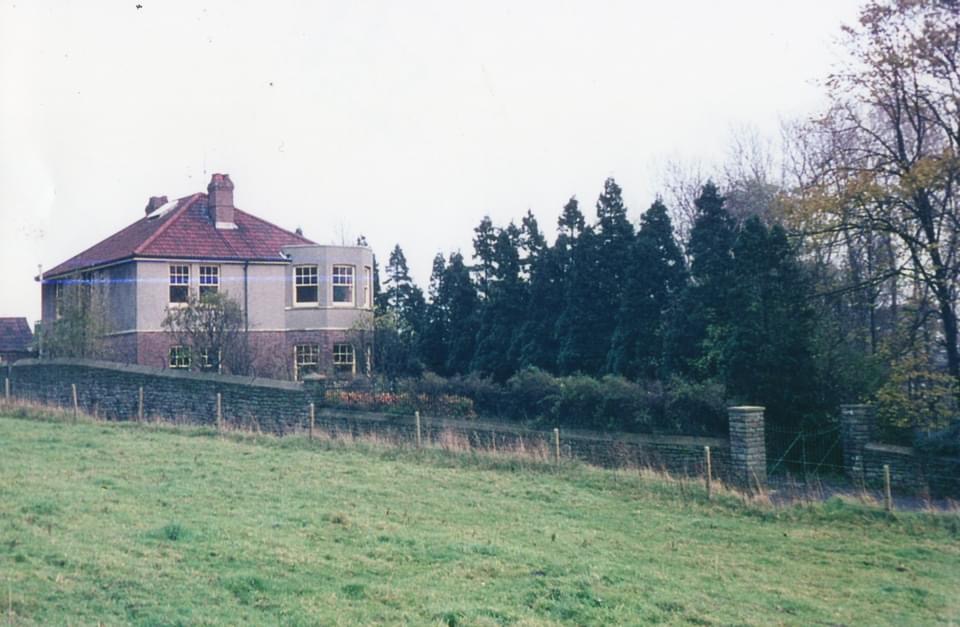
Purdown House c.1950s
Purdown House
A dwelling for medical professionals
We believe that Purdown House was built for the assistant medical officer at Stoke Park Colony, while Westside Cottages comprised 6 new cottages, erected for the colony’s farm workers.
Dianne Radford's grandparents lived in Purdown House when she was a child:
“My grandfather John William Hill (known as Bill) worked at Purdown Hospital as a Chief Nurse and lived on the first floor of Purdown House until it was knocked down to build the motorway.
I remember it as a large house split into 2, to make ground and first floor flats.
I visited my grandparents there as a child in the 1960s and have lovely memories of playing in the large garden. It was a great place to play.
The garden was large with steps down from the front of the house. I think the garden was maintained by the hospital, possibly by the residents but I'm not sure”.
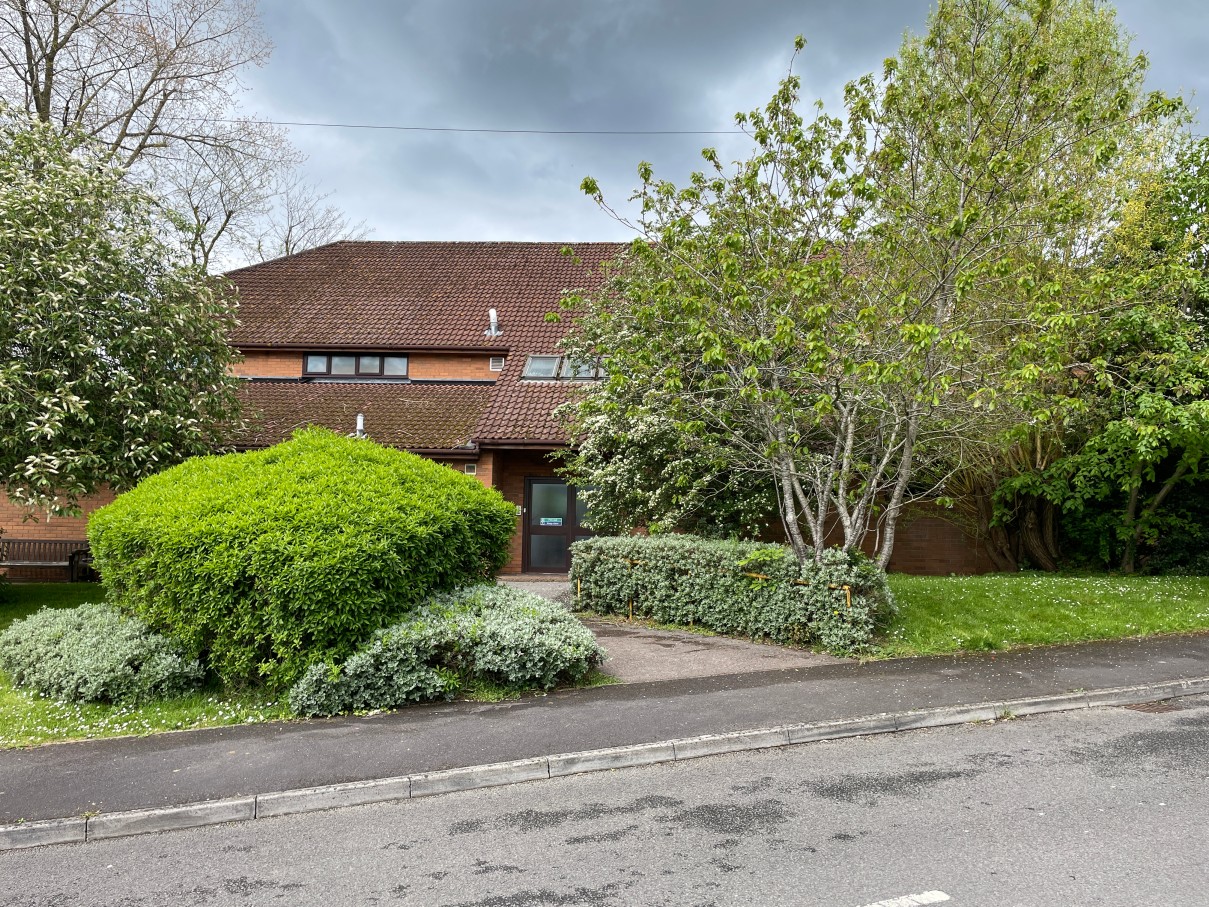
New Friends Hall, 2024
New Friends Hall
A social gathering place
In 1984 the League of Friends at Purdown Hospital, with long-serving Chair Mr Johnson at the helm, raised funds for the construction of New Friends Hall.
The original Friends Hall had stood in front of Beech House immediately adjacent to the sunken pedestrian path rather menacingly named ‘Cut Throat Lane’.
Since the mid-1950s Friends Hall had served as a social club for staff and patients; its successor continuing in a similar vein.
Both the original Friends Hall and New Friends Hall were named so after the Purdown Hospital League of Friends.
Although Purdown Hospital no longer exists, New Friends Hall is the sole surviving NHS facility at this location. It now serves as the Bristol CLDT (Community Learning Difficulties Team) base.
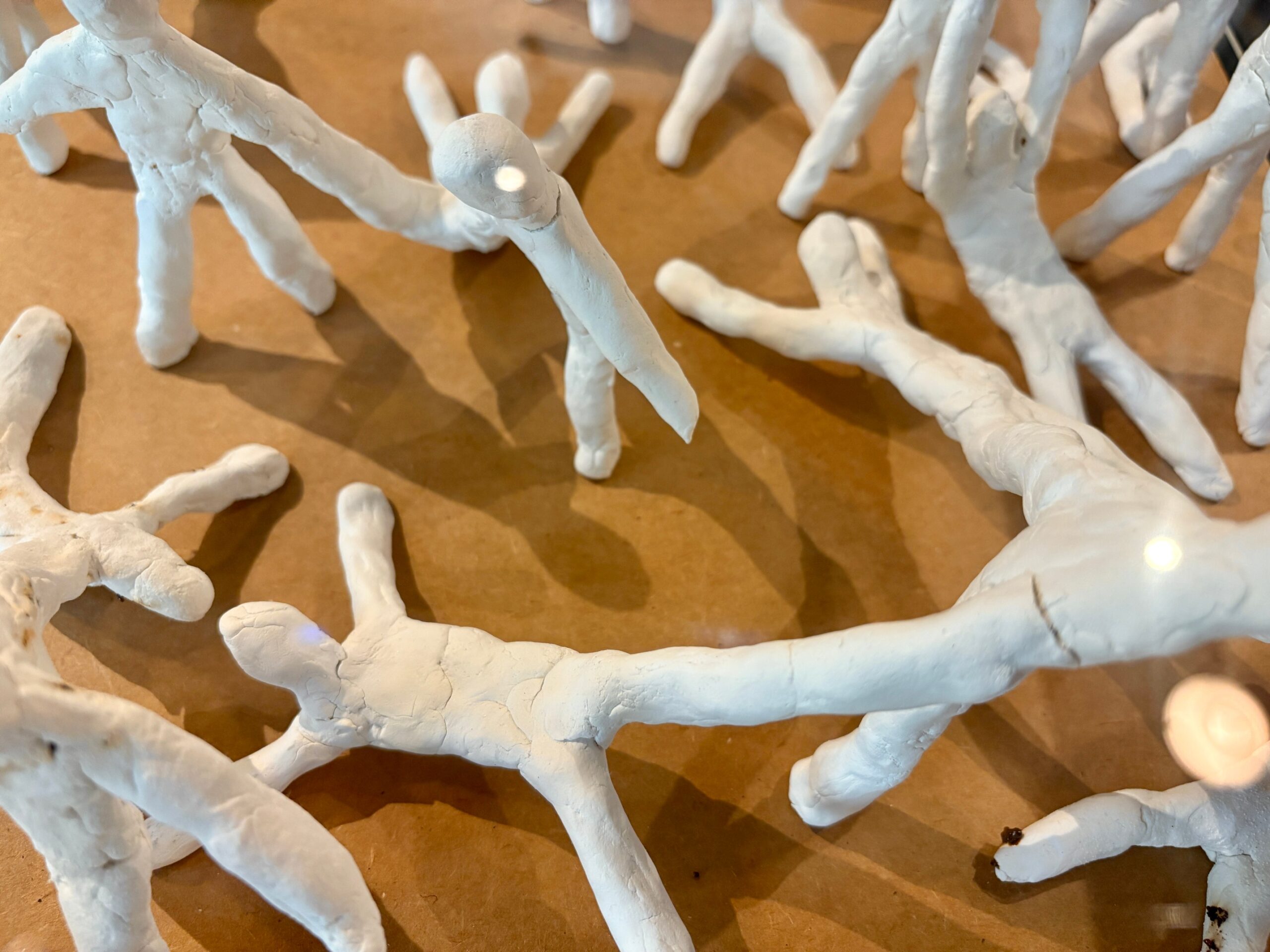
Care in the Community
Throughout the course of the 1980s and 1990s the houses and wards were gradually closed.
In 1992 all remaining learning disability services were absorbed into the new Phoenix NHS Trust. The purpose was to transition into the ‘Care in the Community’ model of healthcare and away from these old residential institutions.
Stoke Park Hospital was officially closed on 31st March 1997.
While we do not feature them at Glenside Hospital Museum, we have a little information on the other hospitals within the Stoke Park Colony:
- Hanham Hall
- Leigh Court
- Anchor Lodge

Explore our collection from anywhere
Discover the fascinating history of Glenside Hospital Museum wherever you are. Browse our collection virtually through the free Bloomberg Connects app, and don’t miss our specially curated Top 20 Highlights Tour.



